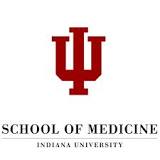
With more than 2,000 students in 2013, the Indiana University School of Medicine is currently the second largest medical school in the United States. The school is a pioneer in cancer, immunology, alcohol, neuroscience, and diabetes (see section below). Notably, some of its recent research discoveries that have received international acclaim include a curative therapy in testicular cancer made by patient Lance Armstrong, the cardiac ultrasound technology, several genes linked to Alzheimer's, the link between mind and body health, the development of neuronal stem cells, and tautomycetin as a potentially new anti-cancer drug.[3][4][5][6] The School of Medicine possesses an NCI-designated Clinical Cancer Center, the only NIH-funded viral vector production facility for clinical grade therapeutics, and one of three Centers of Excellence in Molecular Hematopoiesis in the nation.
Updated: 12/31/1969
Updated: 3/4/2011
Updated: 12/31/1969
Updated: 12/31/1969
Updated: 12/31/1969
Updated: 12/31/1969
Updated: 12/31/1969
Updated: 12/31/1969
Updated: 12/31/1969
Updated: 12/31/1969
Updated: 12/31/1969
Updated: 12/31/1969
Updated: 12/31/1969
Updated: 12/31/1969
Updated: 12/31/1969
Updated: 12/31/1969
Updated: 12/31/1969
Updated: 3/19/2018
Updated: 12/31/1969
Updated: 8/3/2015
Updated: 12/31/1969
Updated: 12/31/1969
Updated: 12/31/1969
Updated: 12/31/1969
Updated: 12/31/1969
Updated: 12/31/1969
Updated: 12/31/1969
Updated: 12/31/1969
Updated: 12/31/1969
Updated: 12/31/1969
Updated: 12/31/1969
Updated: 2/22/2016
Updated: 12/31/1969
Updated: 12/31/1969
Updated: 12/31/1969
Updated: 2/22/2016